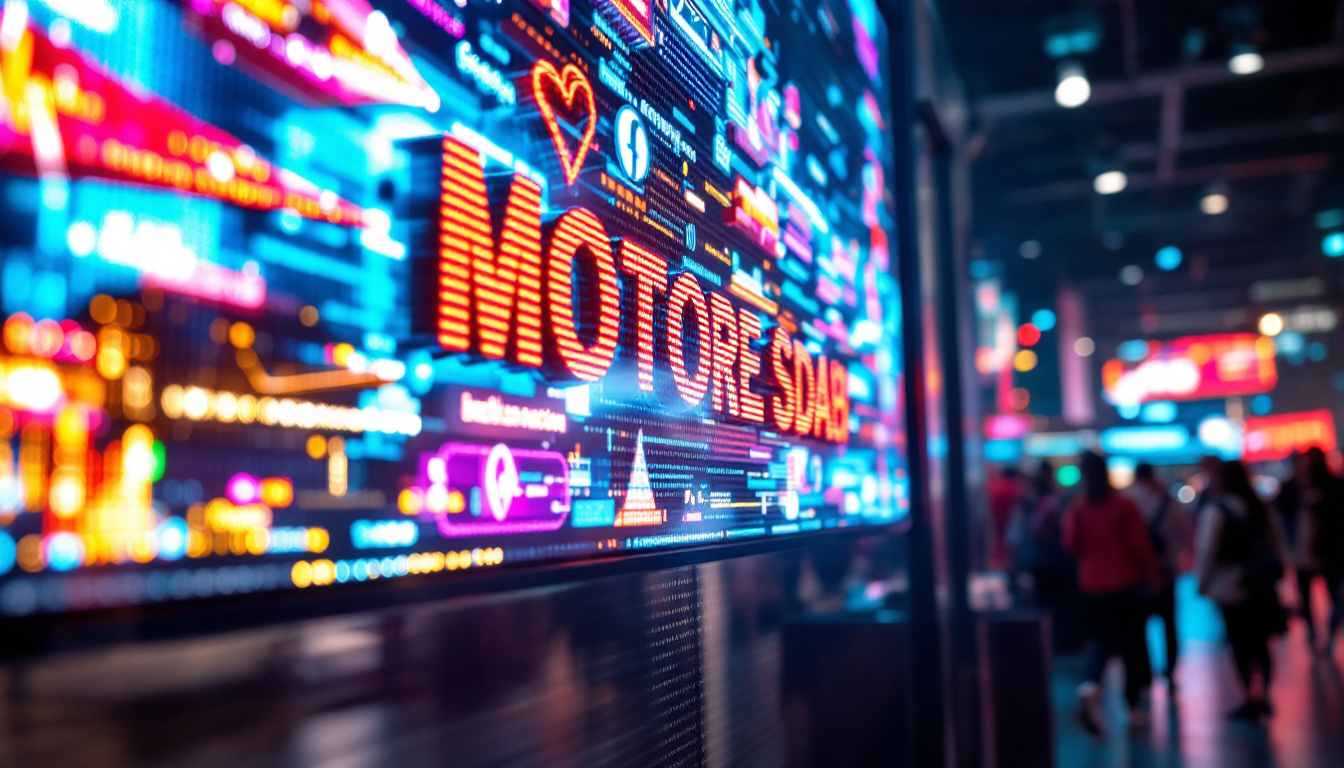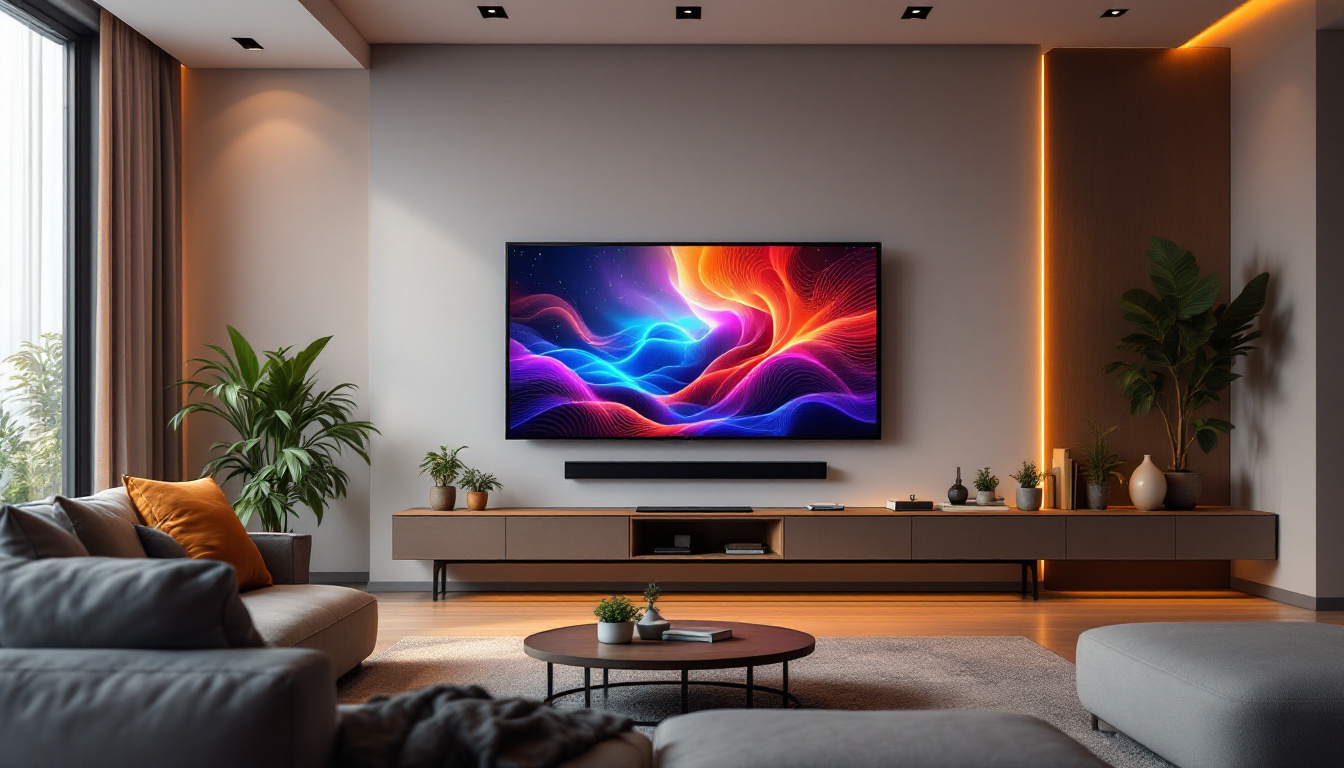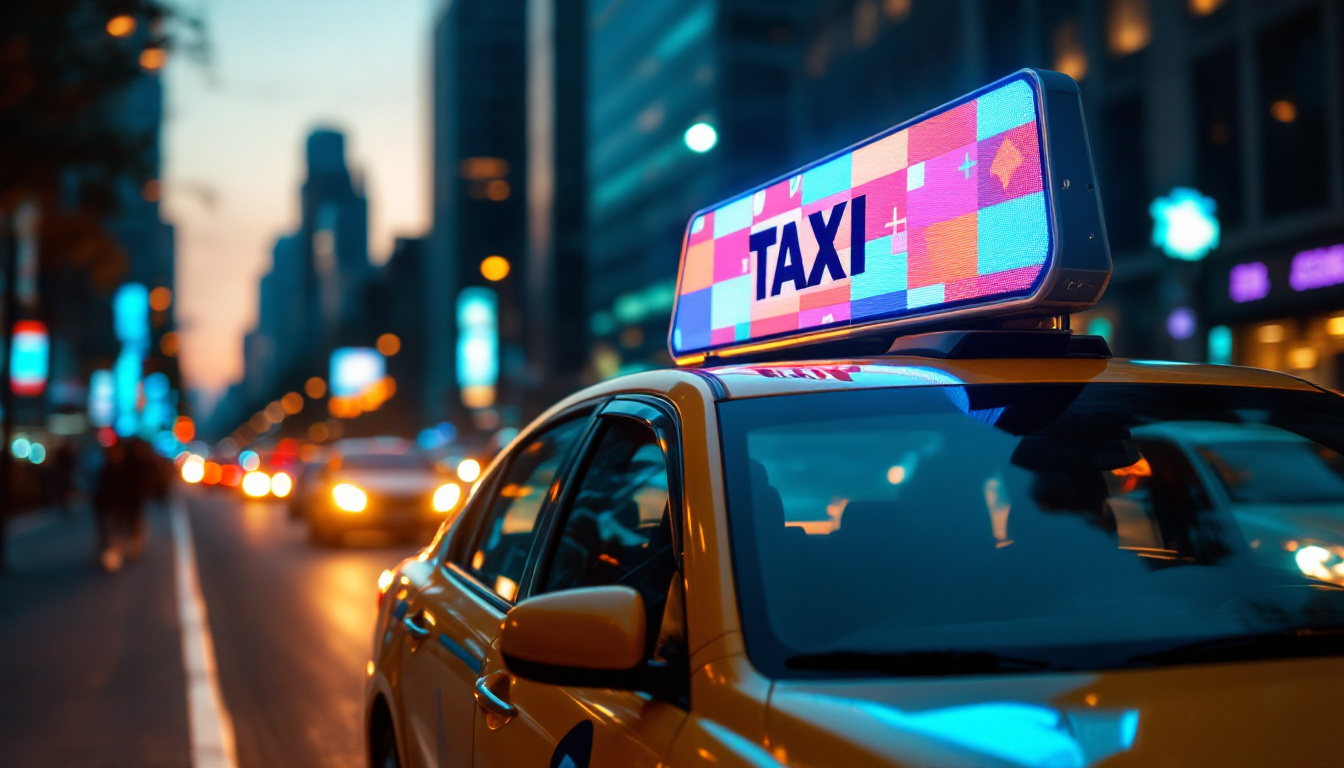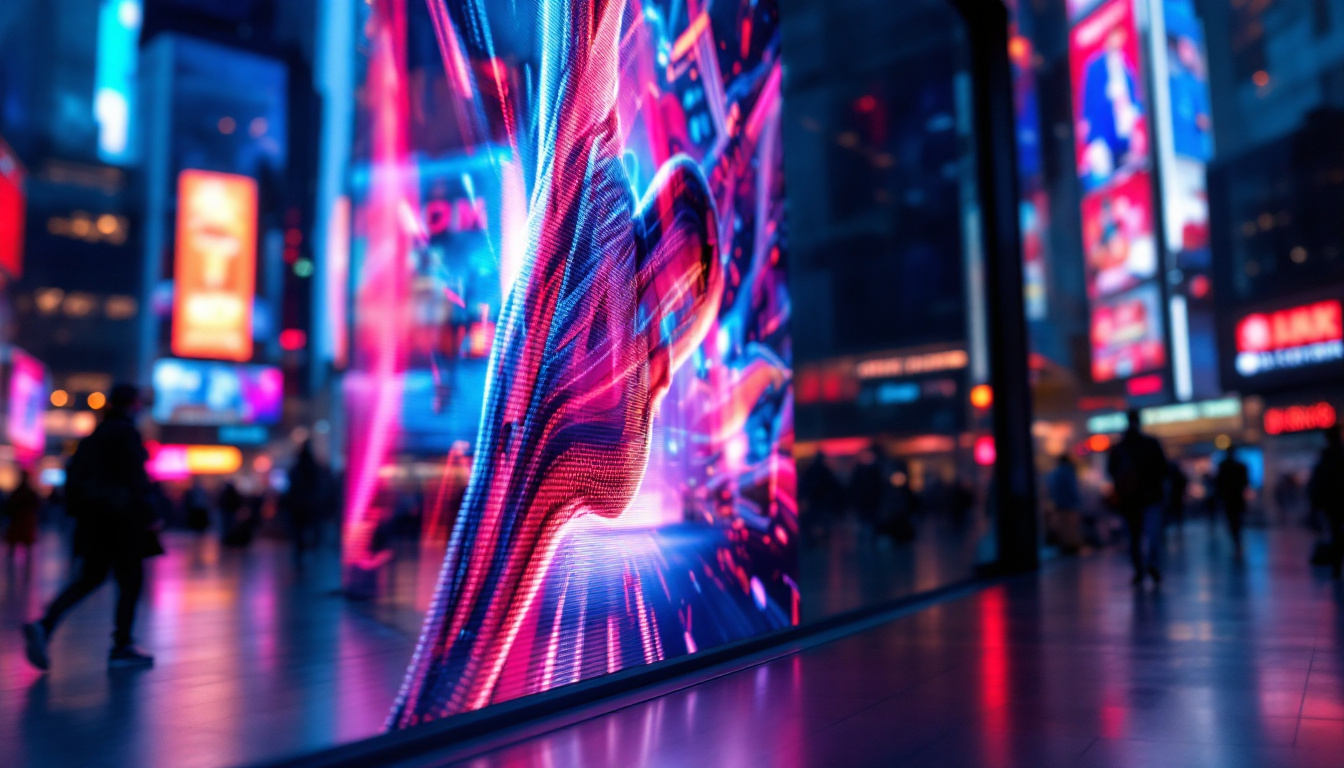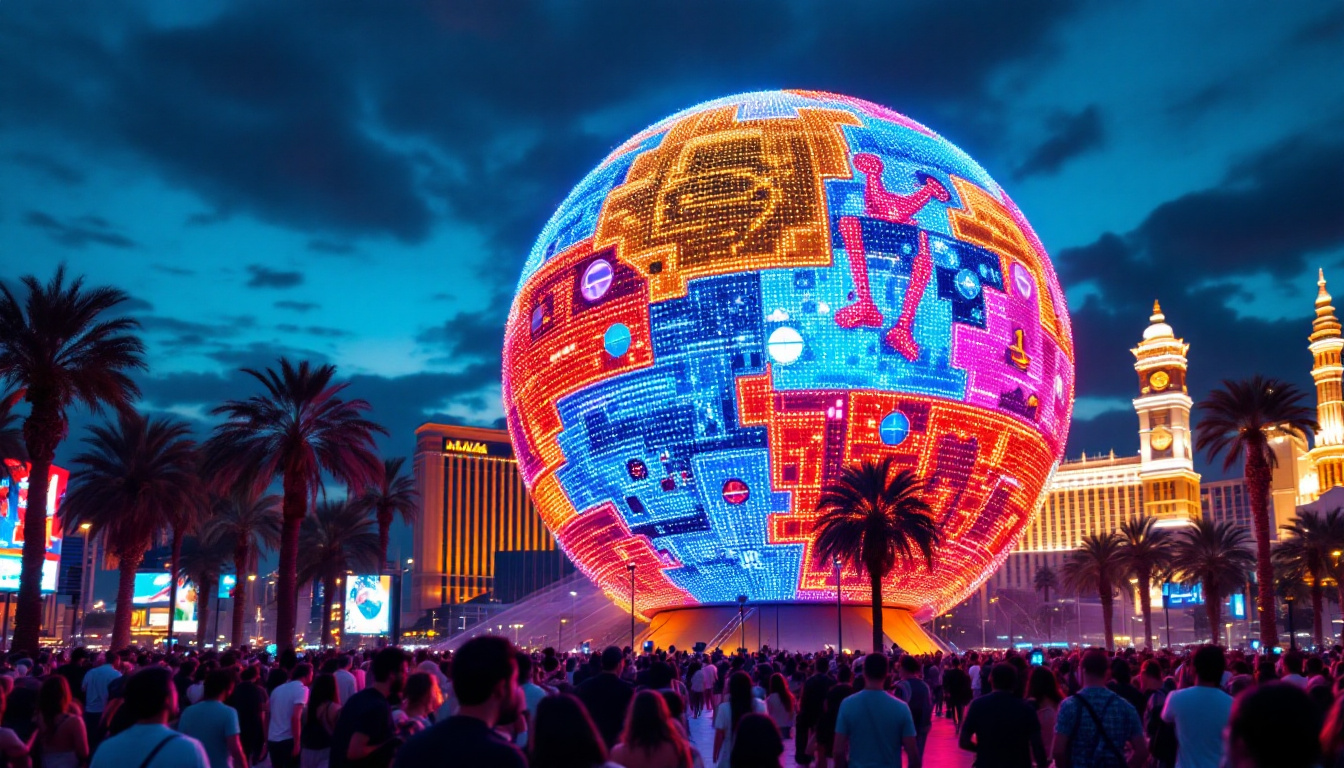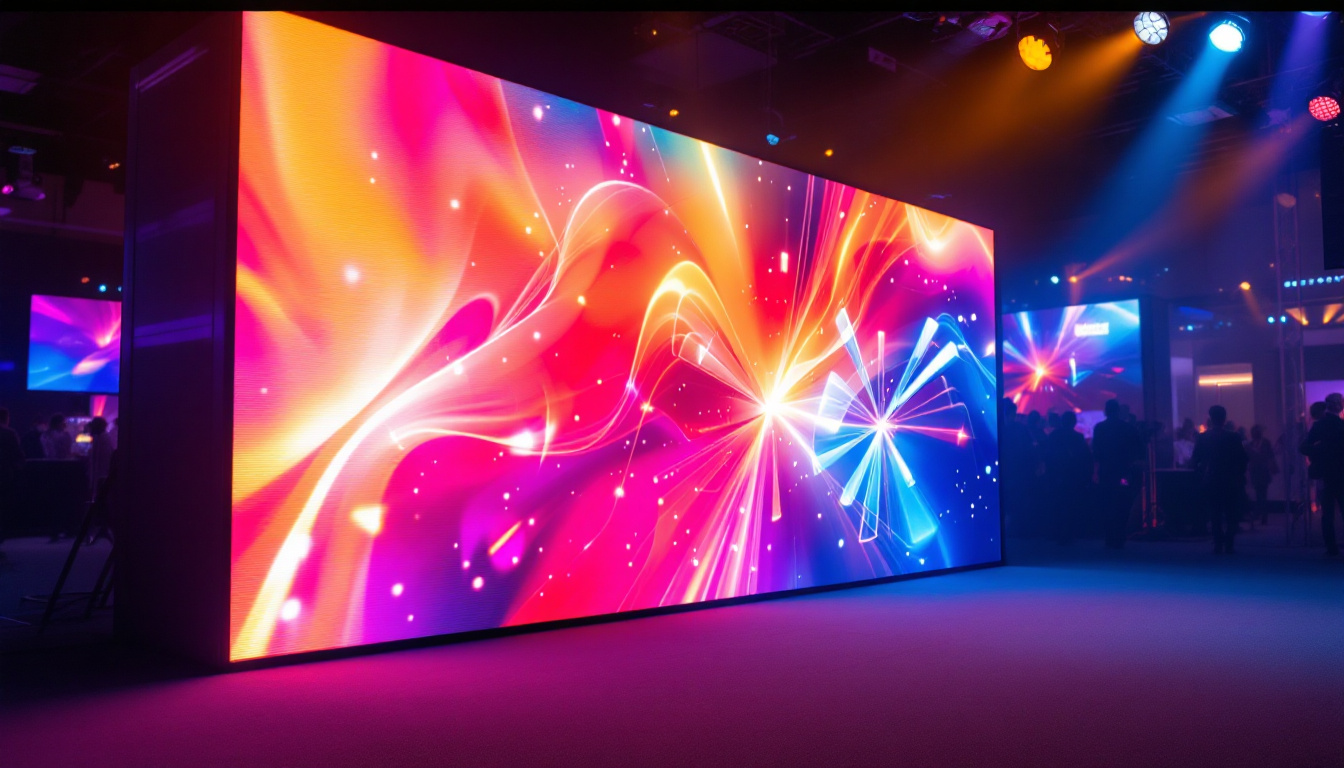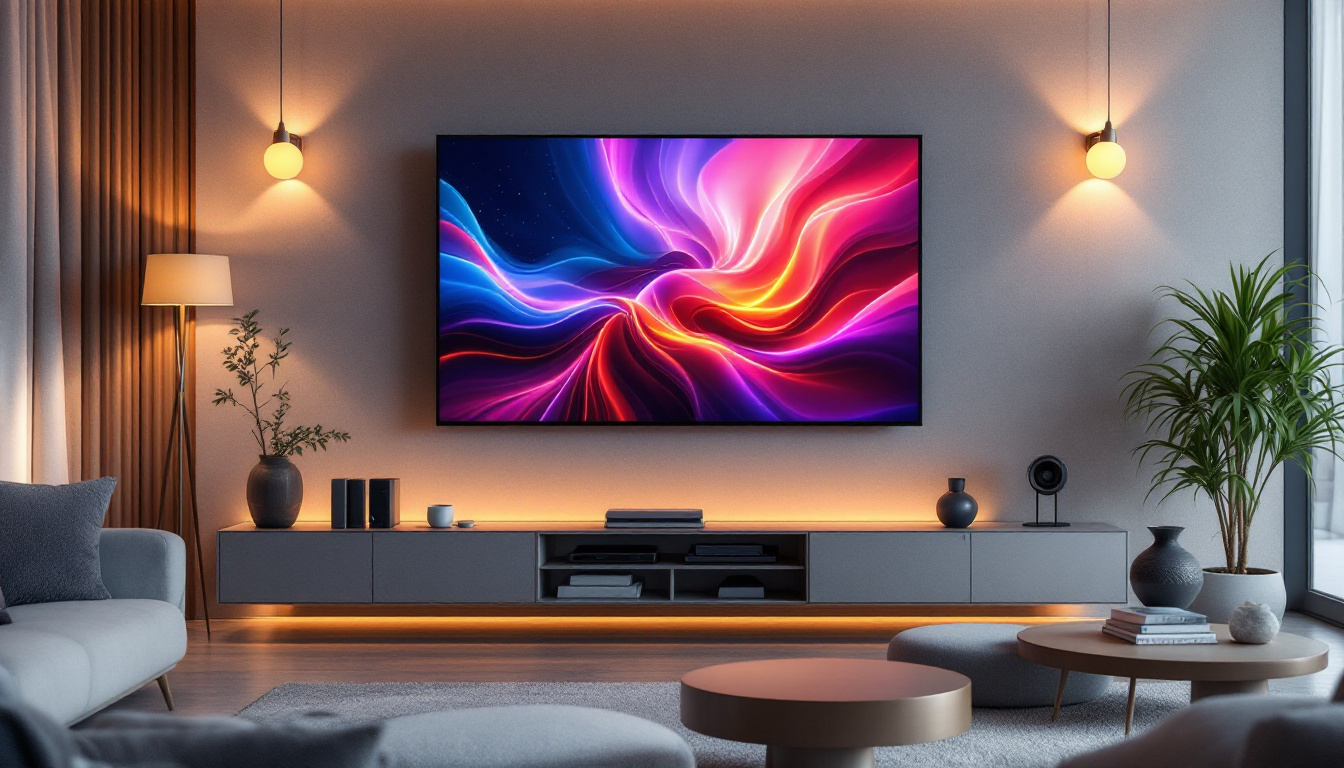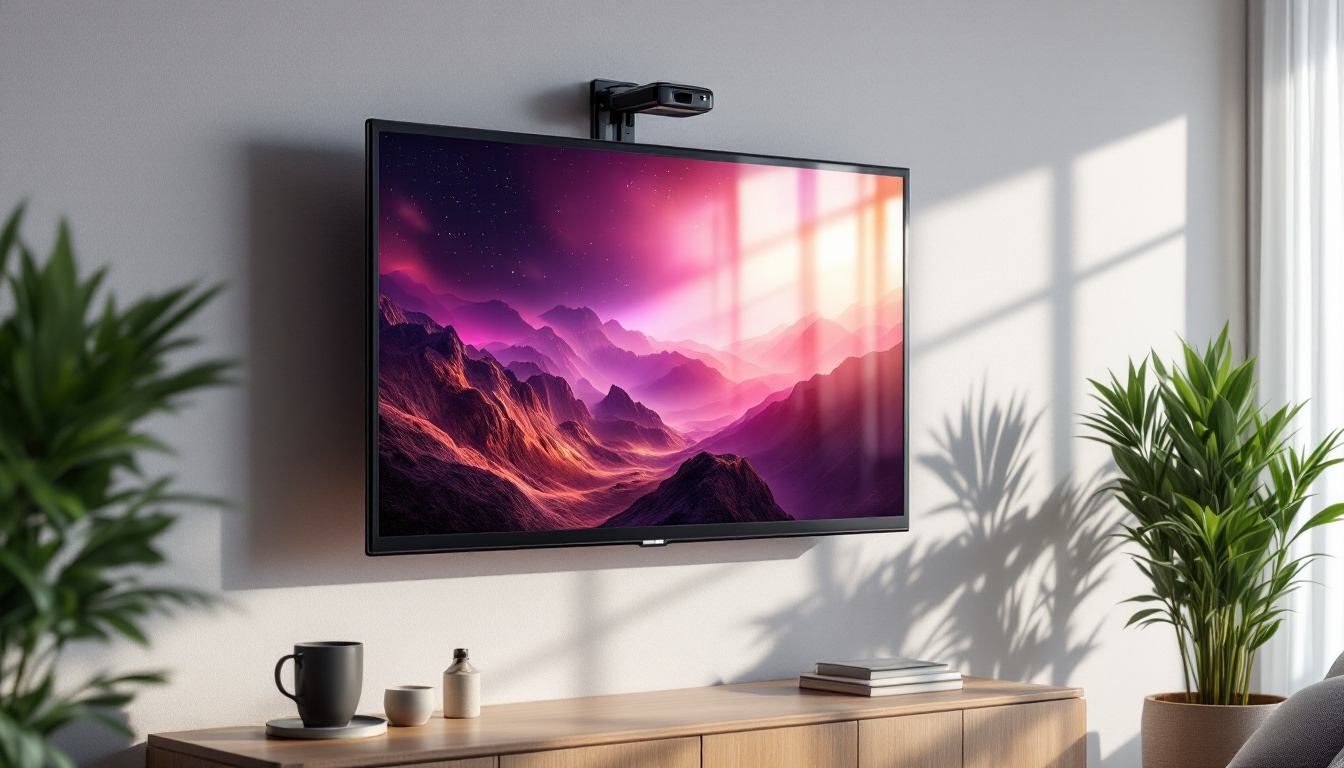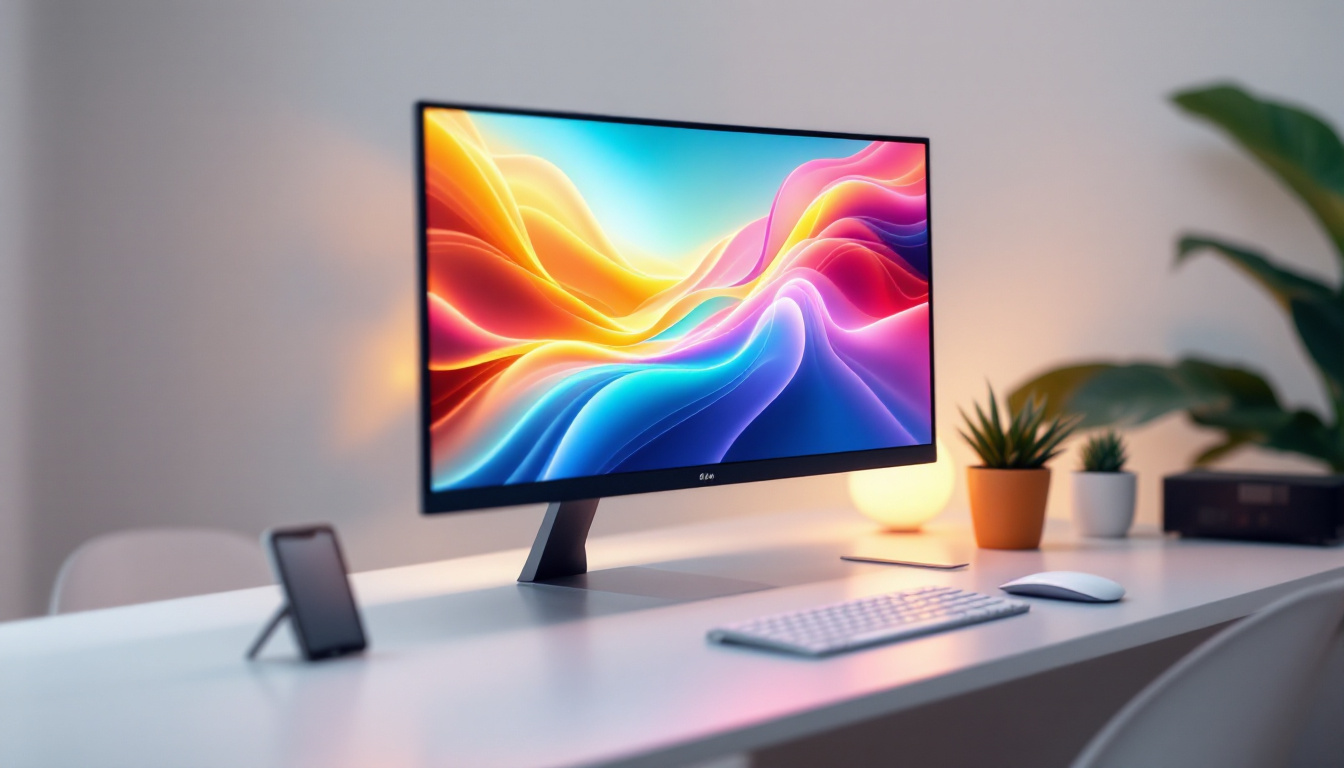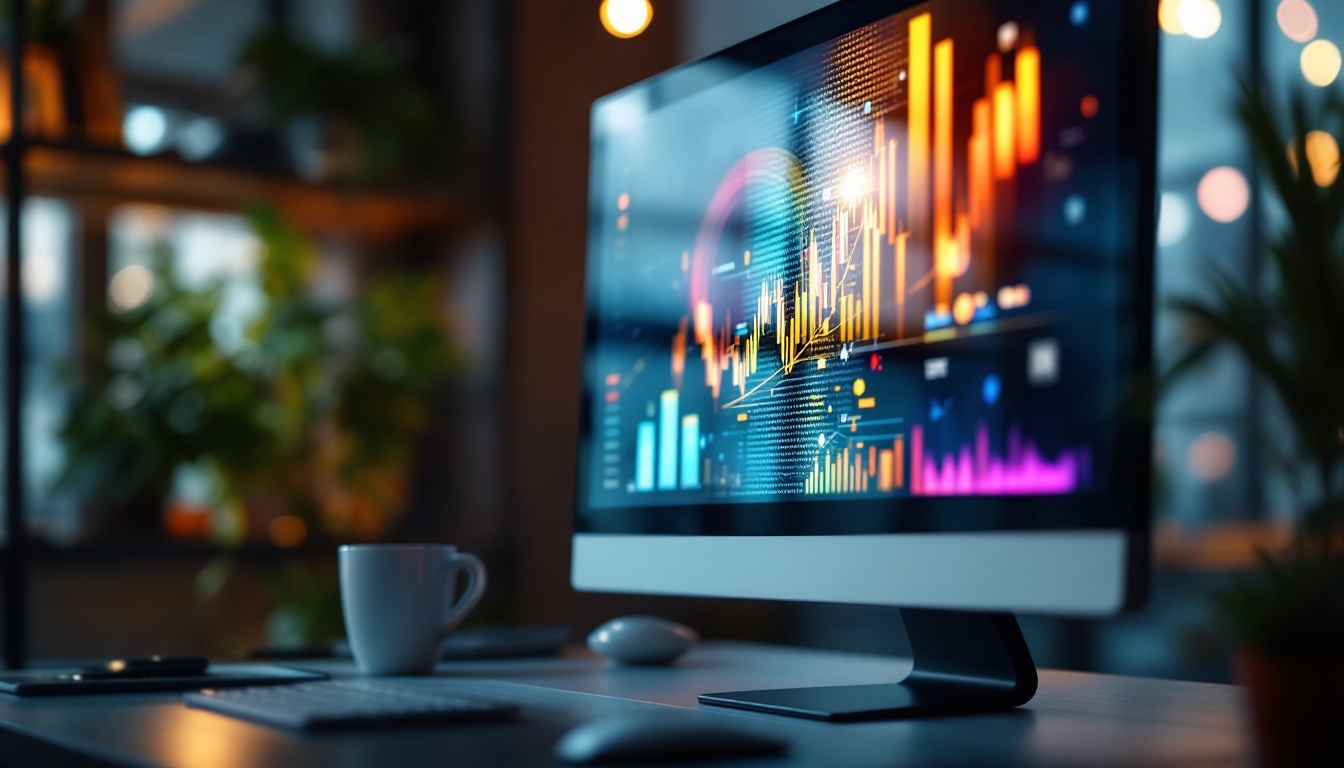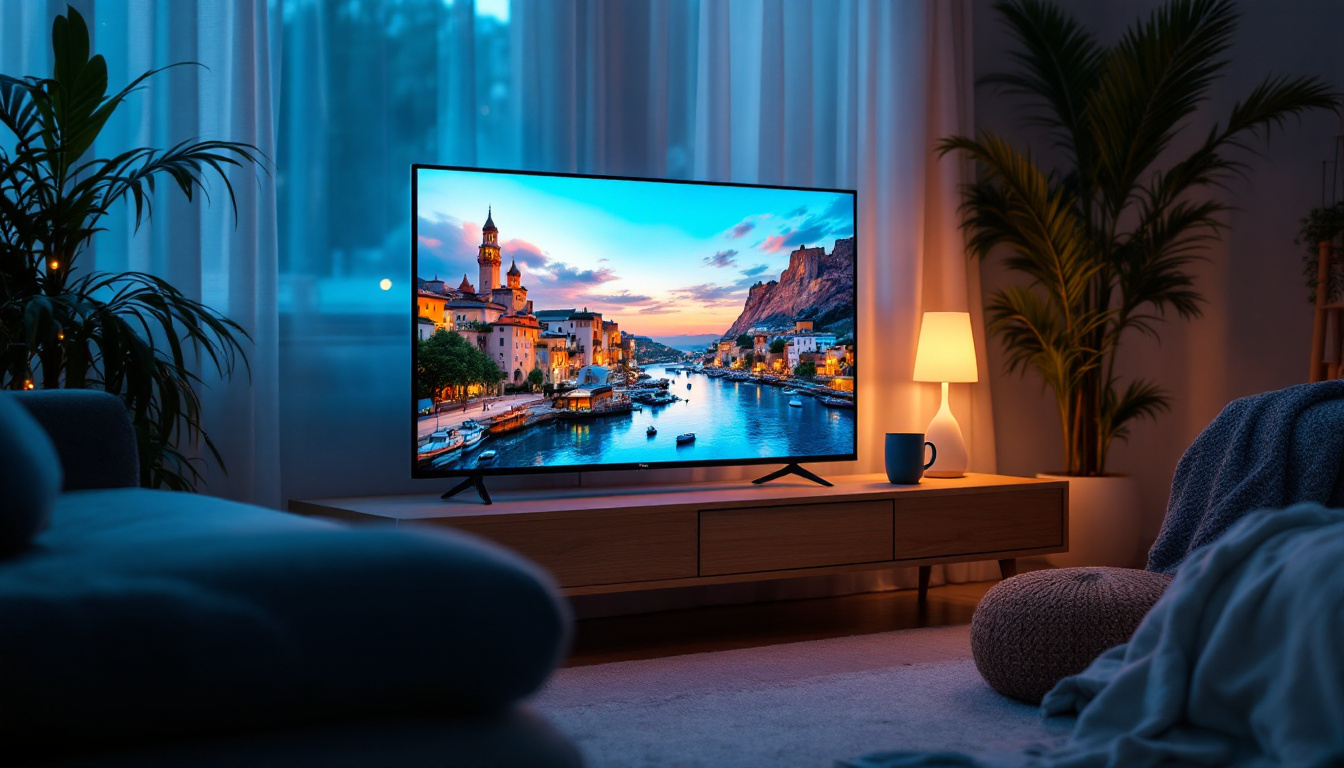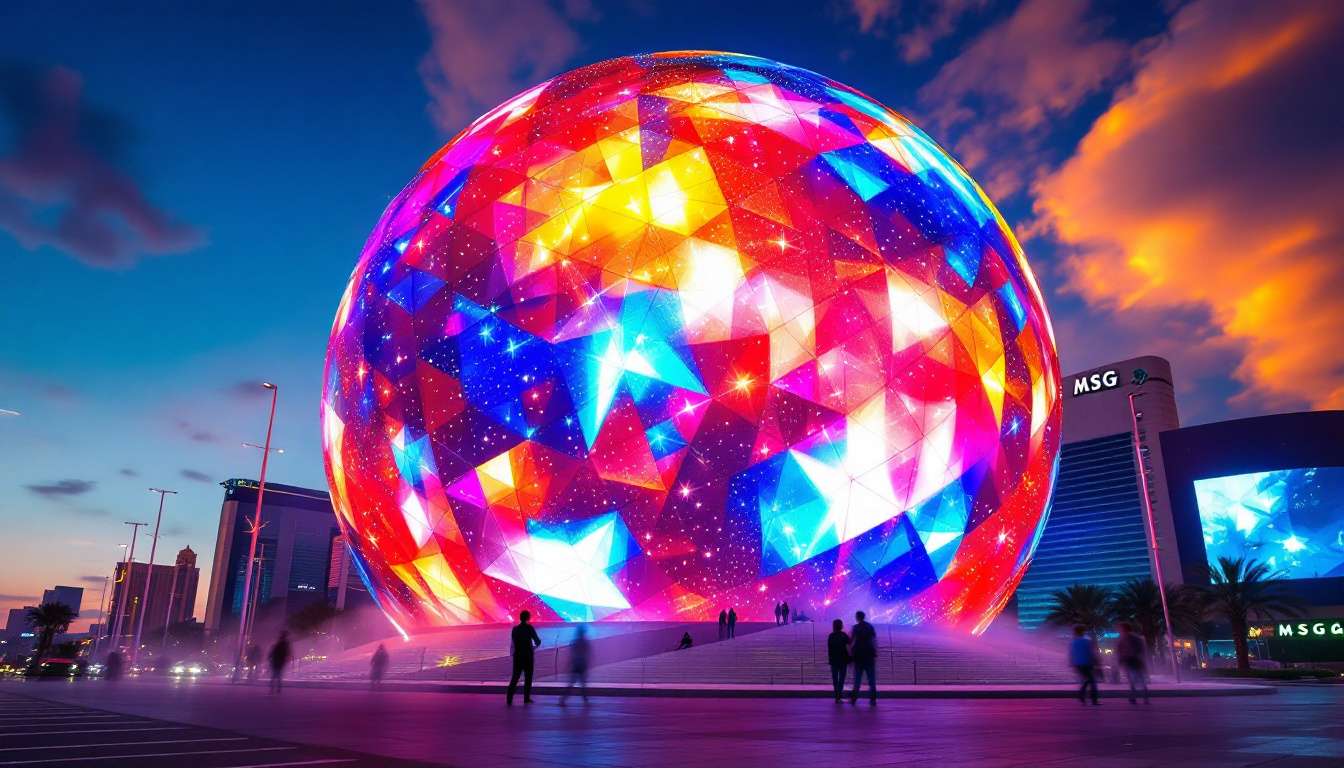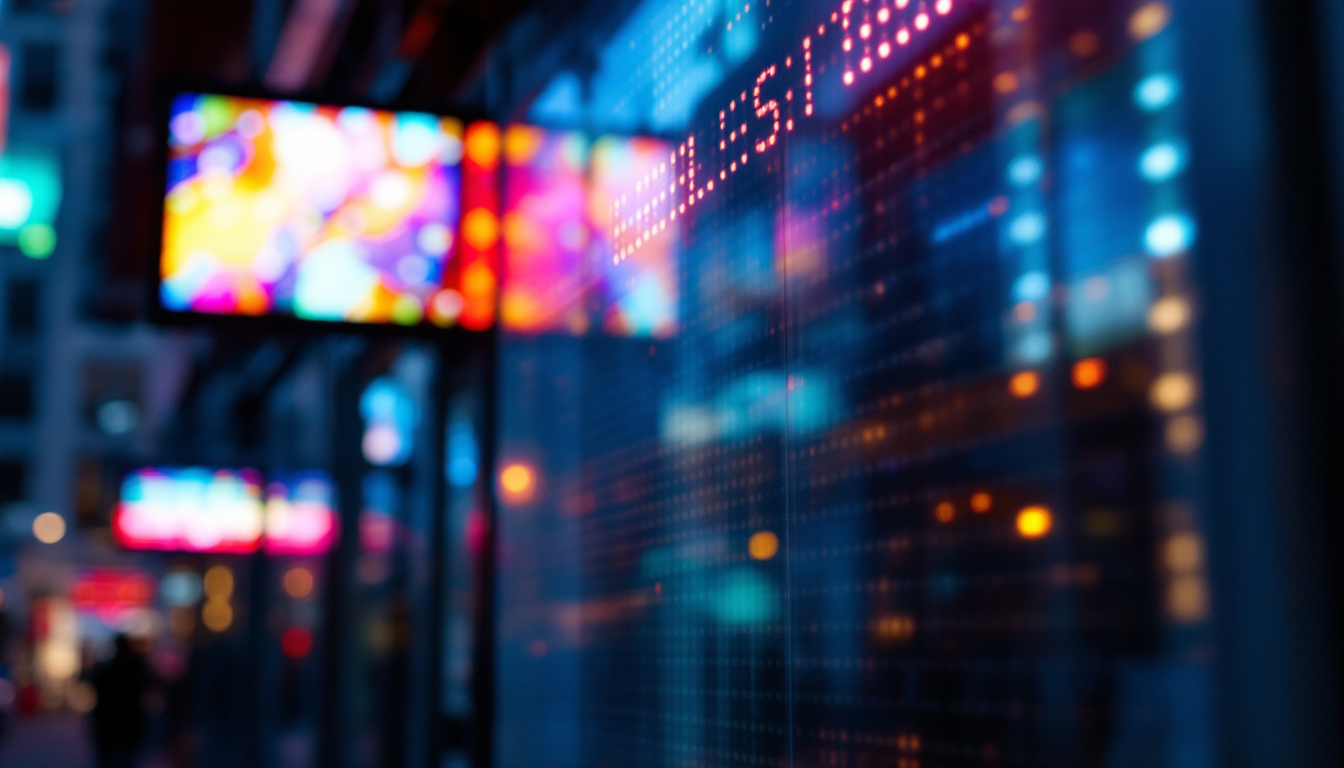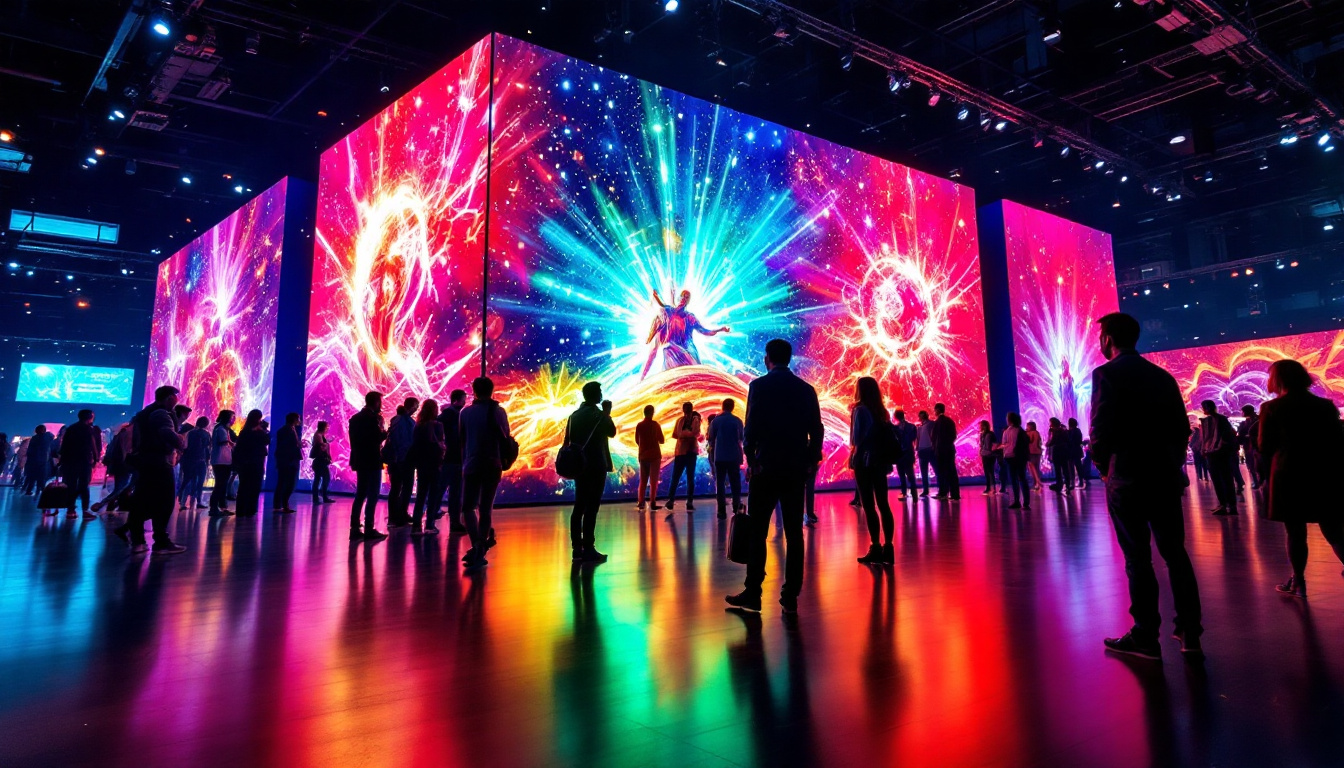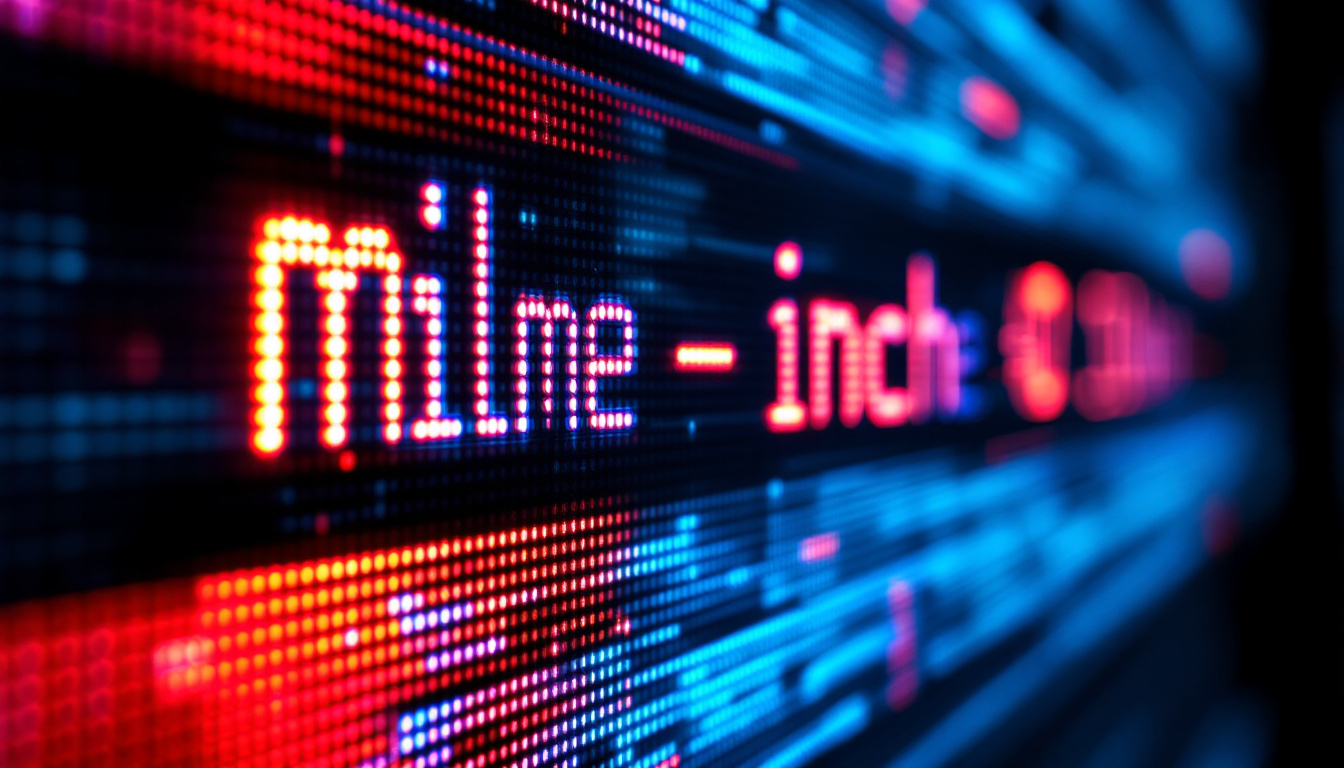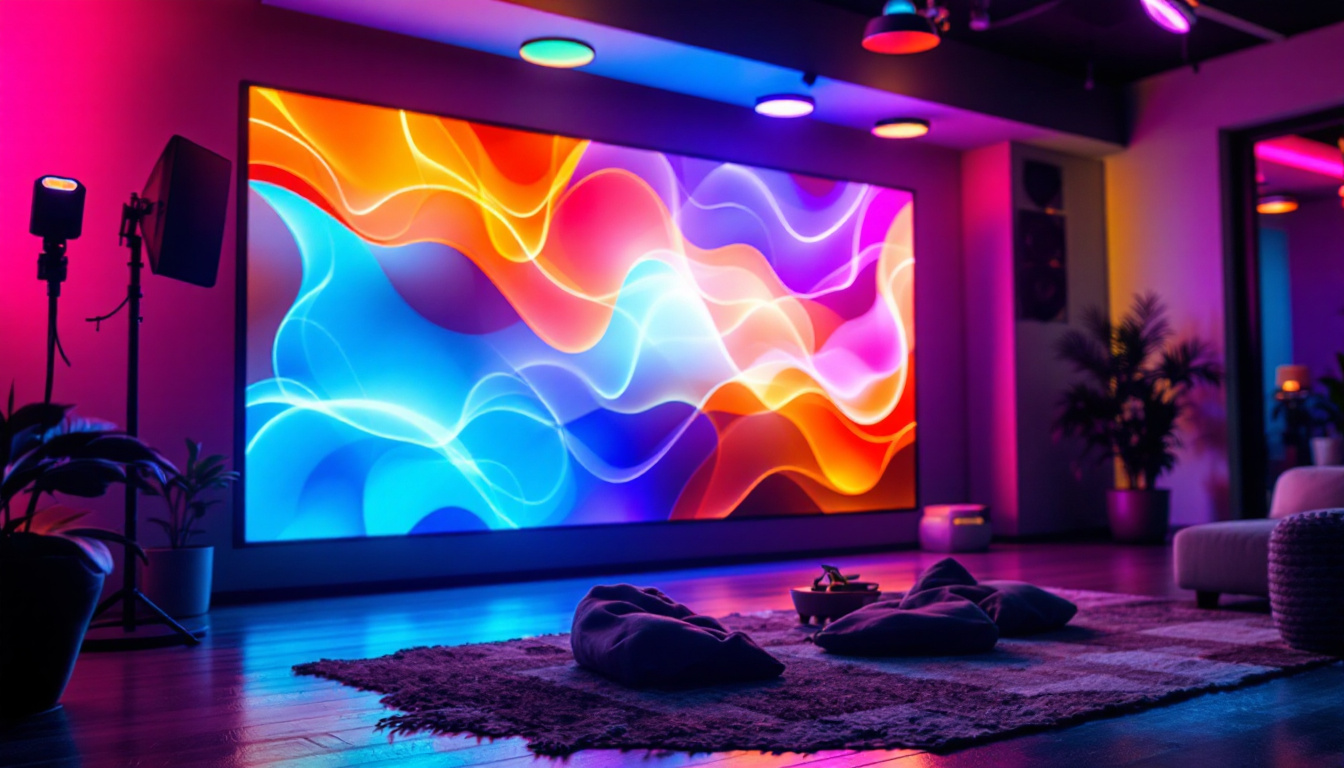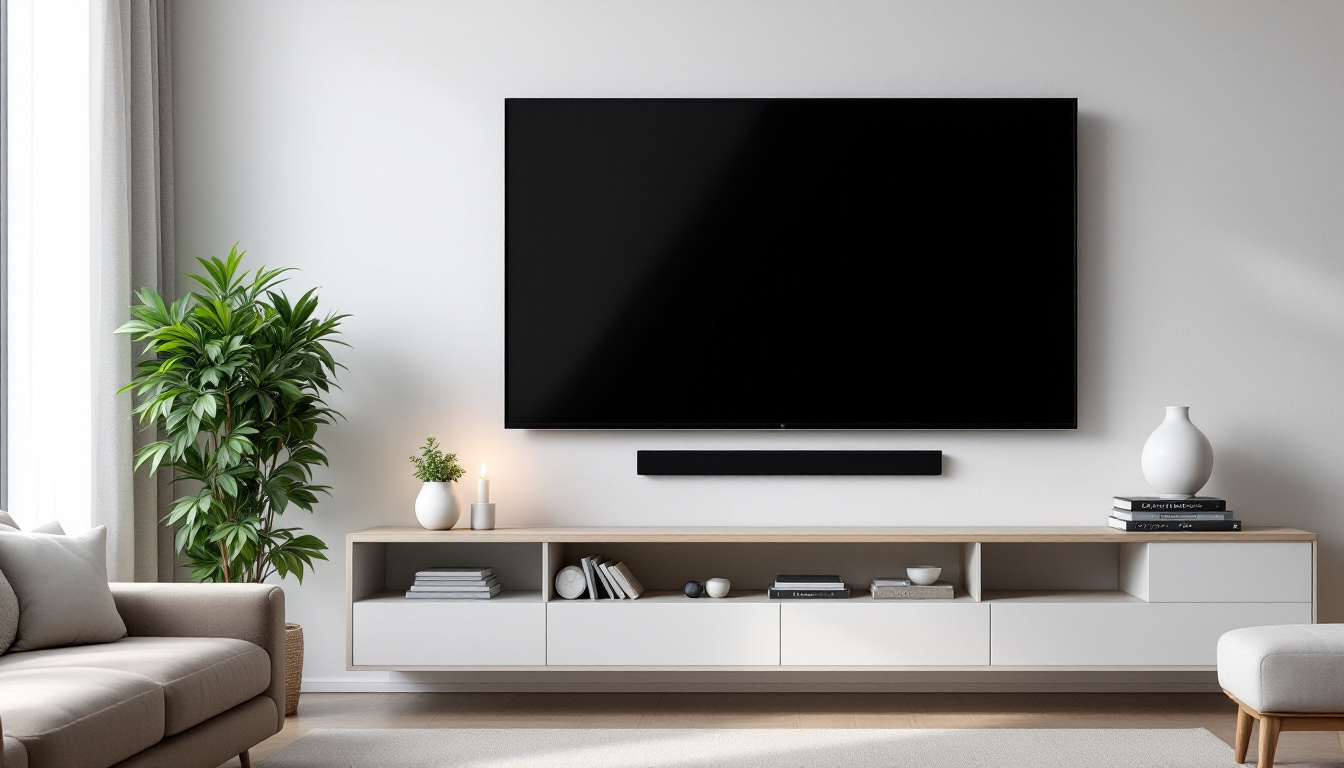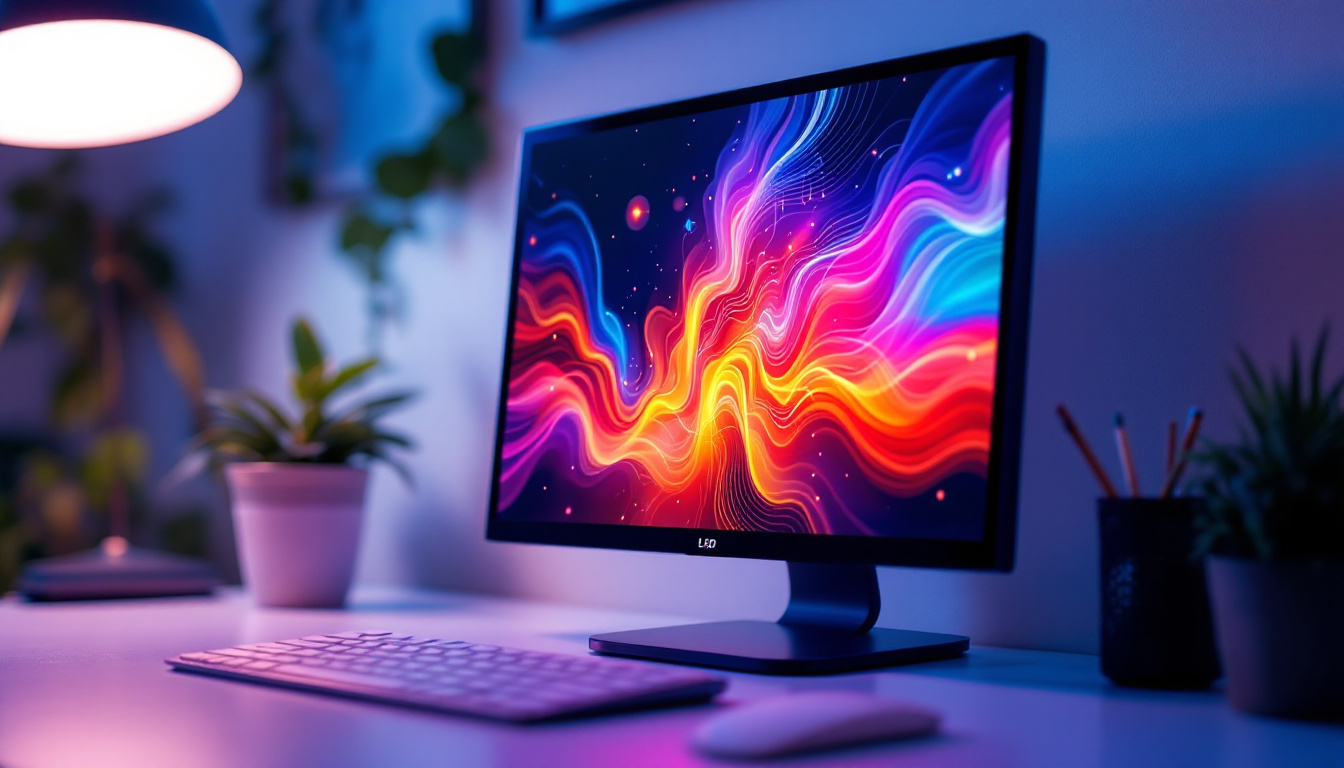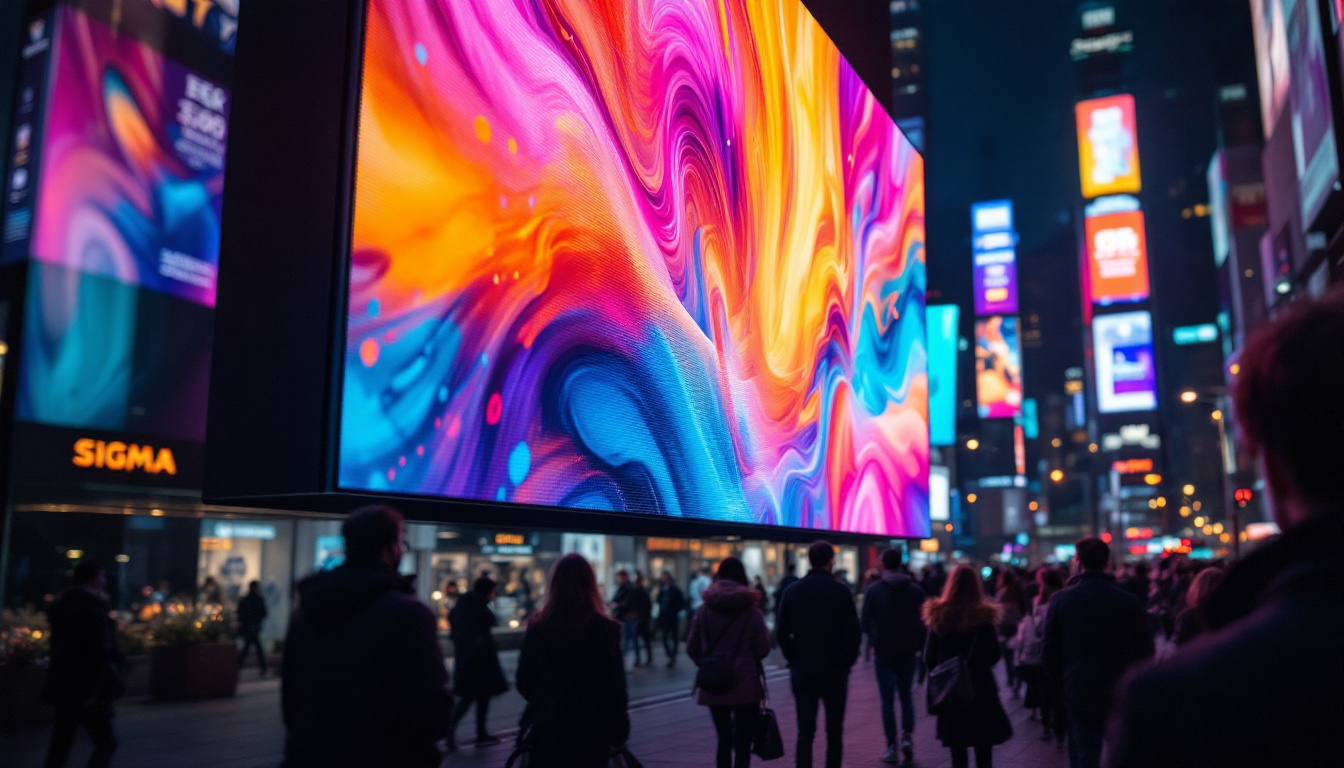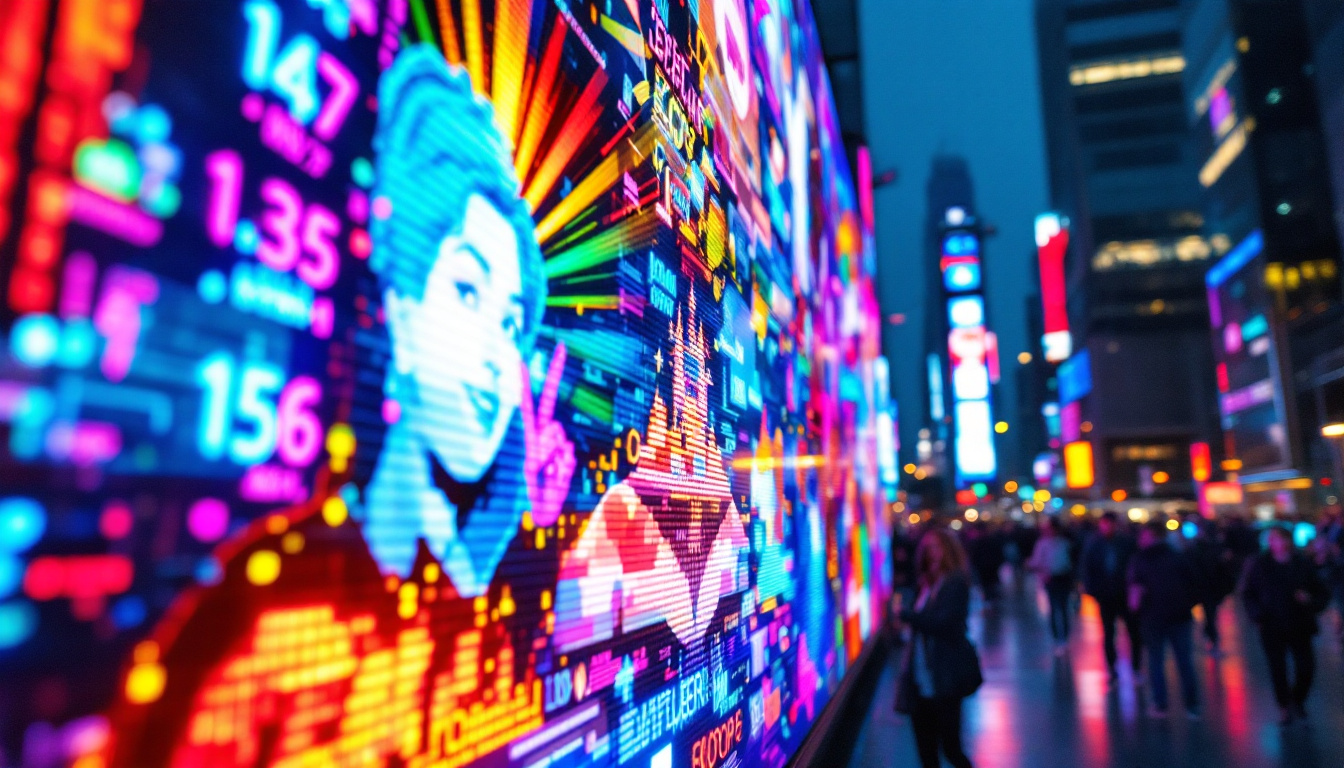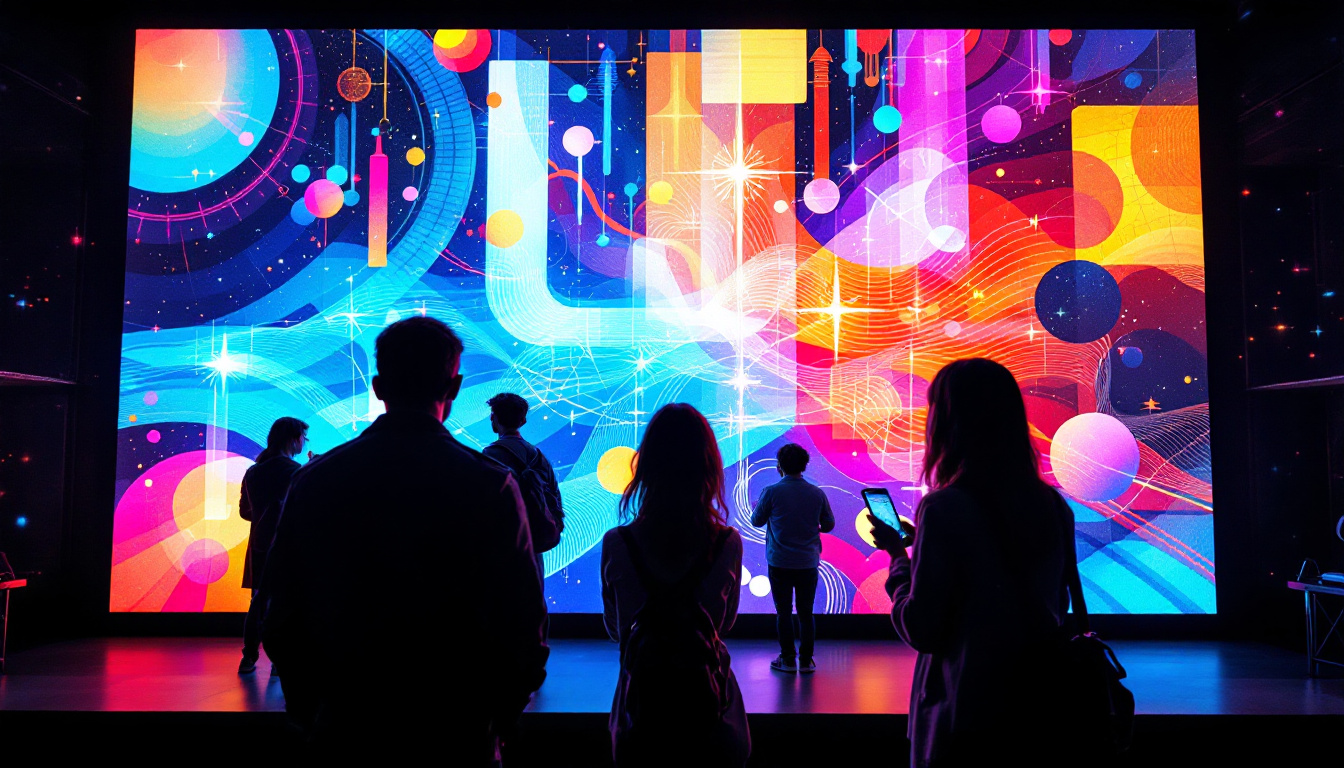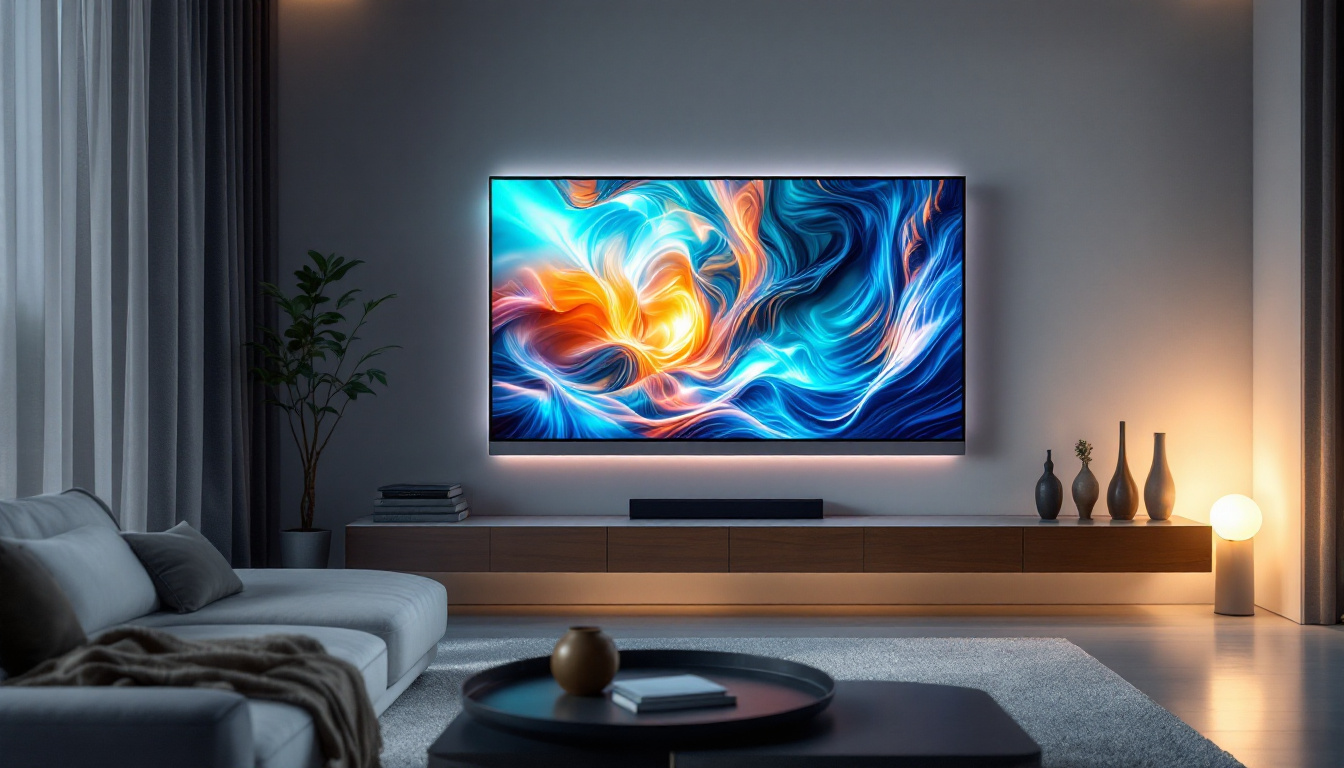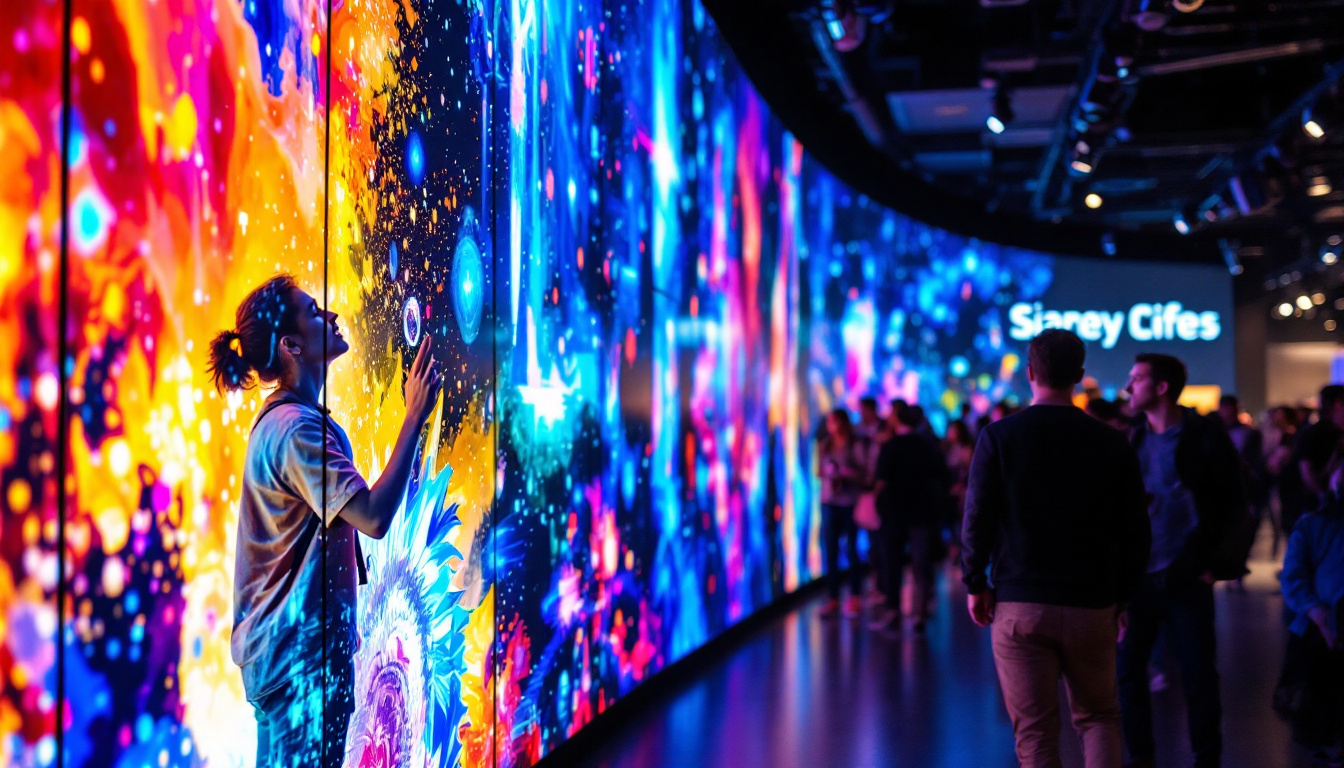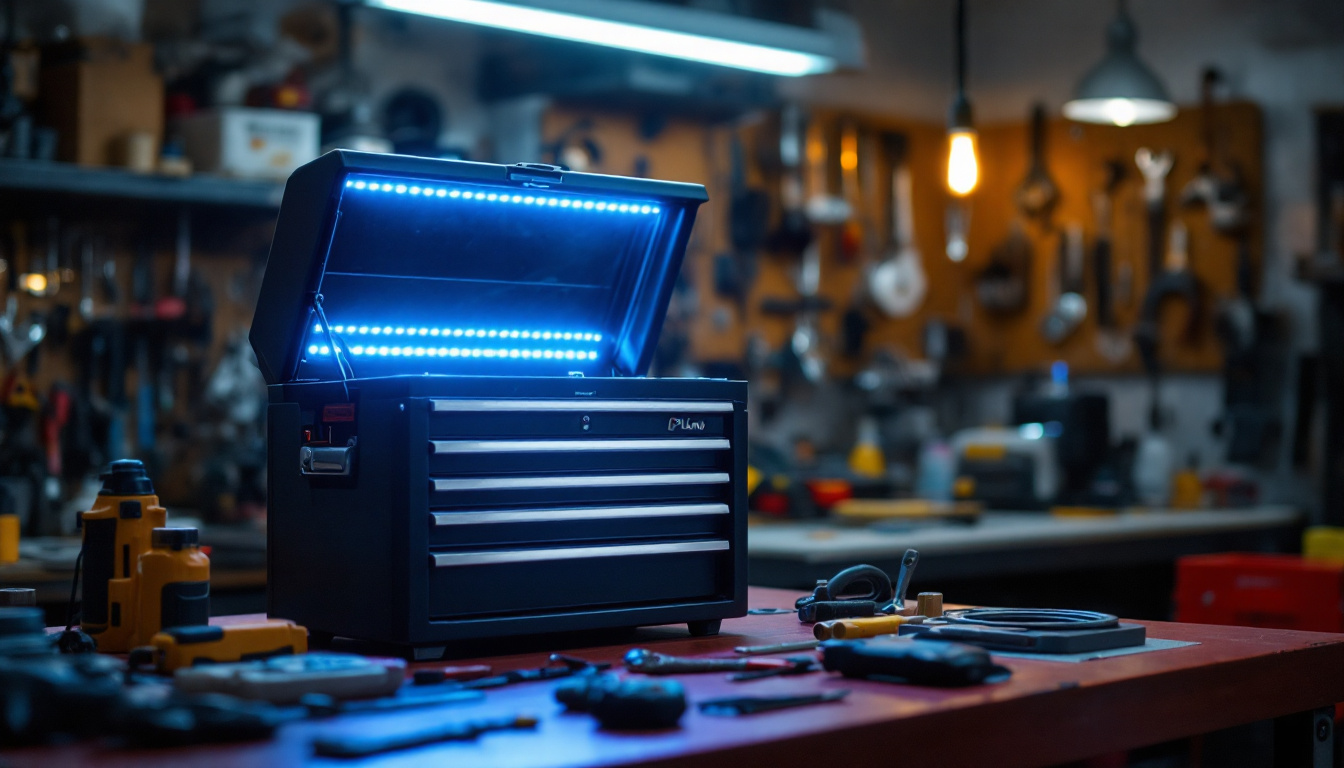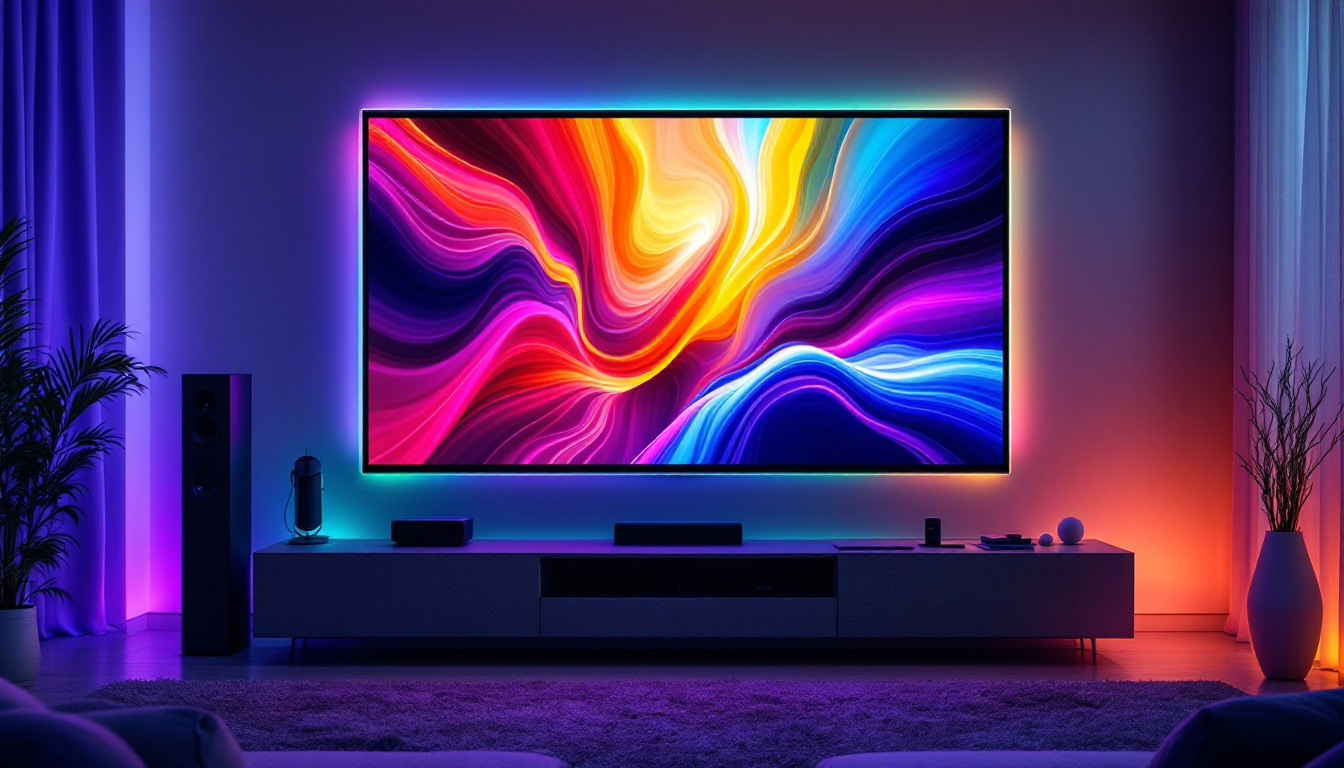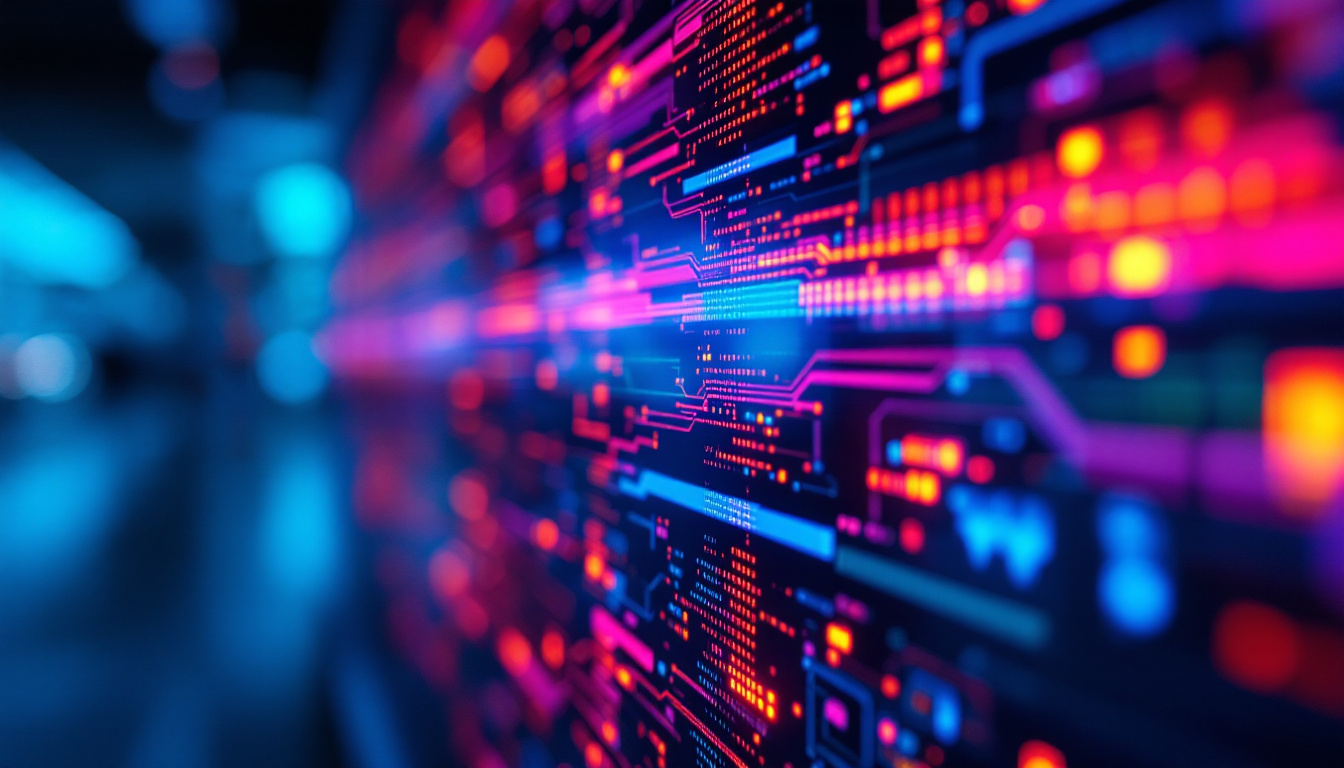In the modern world of visual communication, LED displays have become a cornerstone of both advertising and information dissemination. Their versatility, brightness, and energy efficiency make them a popular choice for various applications, from large outdoor billboards to small indoor screens. This article delves into the intricacies of LED technology, exploring its components, functionalities, and the myriad of uses it serves in today’s society.
Understanding LED Technology
Light Emitting Diodes (LEDs) are semiconductor devices that emit light when an electric current passes through them. The basic principle behind LED technology is the electroluminescence phenomenon, where certain materials emit light in response to an electric current. This technology has evolved significantly since its inception, leading to a wide array of applications in display technology.
The Components of an LED Display
An LED display is composed of several key components that work together to produce vibrant images and videos. These components include:
- LED Modules: These are the building blocks of an LED display, consisting of multiple LEDs arranged in a grid. Each module can be controlled independently to create dynamic visuals.
- Control Systems: This includes software and hardware that manage the content displayed on the screen. It allows for real-time updates and scheduling of content.
- Power Supply: LEDs require a specific voltage and current to operate efficiently. The power supply ensures that each LED receives the appropriate energy.
How LED Displays Work
When an electric current flows through the LED, it excites the electrons in the semiconductor material, causing them to emit photons, which we perceive as light. The color of the light emitted depends on the materials used in the semiconductor. By combining different colors of LEDs—typically red, green, and blue (RGB)—displays can produce a full spectrum of colors through additive color mixing.
Each pixel in an LED display is made up of these RGB components, allowing for the creation of detailed images and videos. The resolution of the display is determined by the number of pixels it contains, which directly impacts the clarity and quality of the visuals.
In addition to their vibrant colors and energy efficiency, LED displays are also known for their longevity and durability. Unlike traditional incandescent bulbs, which can burn out quickly, LEDs have a much longer lifespan, often exceeding 50,000 hours of use. This makes them an ideal choice for both indoor and outdoor applications, where they can withstand various environmental conditions. Furthermore, advancements in LED technology have led to the development of flexible and transparent displays, opening new avenues for creative applications in advertising and architecture.
The versatility of LED displays extends beyond mere aesthetics; they are also increasingly being integrated into smart technologies. With the rise of the Internet of Things (IoT), LED displays can now be connected to the internet, allowing for remote management and real-time data integration. This capability enables businesses to display dynamic content that can change based on audience engagement, weather conditions, or even time of day, making LED displays not just a visual tool but a powerful medium for communication and interaction.
Types of LED Displays
LED displays come in various types, each designed for specific applications and environments. Understanding these types can help in selecting the right display for a particular need.
Indoor vs. Outdoor LED Displays
Indoor LED displays are designed for use in controlled environments, such as shopping malls, conference rooms, and theaters. They typically have a higher pixel density, which allows for sharper images viewed from a closer distance. In contrast, outdoor LED displays are built to withstand weather conditions and have lower pixel density, as they are viewed from greater distances. Outdoor displays often feature protective coatings and robust housings to guard against rain, dust, and extreme temperatures, ensuring longevity and reliability even in harsh climates. Additionally, many outdoor models are equipped with advanced brightness control systems that automatically adjust the display’s luminosity based on ambient light conditions, ensuring visibility at all times.
Fixed vs. Rental LED Displays
Fixed LED displays are permanently installed in a location, such as stadiums or building facades. They are designed for long-term use and typically have a higher initial investment. Rental LED displays, on the other hand, are designed for temporary setups, such as concerts or events. These displays are modular and can be easily assembled and disassembled, providing flexibility for various applications. The rental market has seen significant growth, driven by the increasing demand for high-quality visuals at events, trade shows, and exhibitions. Rental displays often come with advanced features such as high refresh rates and superior color accuracy, making them ideal for live performances where visual impact is crucial. Furthermore, companies specializing in rental services often provide technical support and setup assistance, ensuring that the displays operate flawlessly throughout the duration of the event.
Advantages of LED Displays
LED displays offer numerous advantages over traditional display technologies, making them a preferred choice in many scenarios.
Energy Efficiency
One of the most significant benefits of LED technology is its energy efficiency. LED displays consume significantly less power compared to traditional LCD or plasma screens. This not only reduces operational costs but also minimizes the environmental impact, making LED displays a more sustainable choice. Furthermore, the reduced energy consumption contributes to lower greenhouse gas emissions, aligning with global efforts to combat climate change. As businesses and organizations increasingly prioritize sustainability, the energy efficiency of LED displays becomes an attractive feature that can enhance their corporate responsibility profiles.
Brightness and Visibility
LED displays are known for their exceptional brightness, which makes them visible even in direct sunlight. This characteristic is particularly advantageous for outdoor advertising, where visibility is crucial for capturing the attention of passersby. The ability to adjust brightness levels also allows for optimal viewing in various lighting conditions. In addition, the color accuracy and vibrancy of LED displays enhance the overall visual experience, making advertisements and presentations more engaging. This capability is especially beneficial in dynamic environments such as concerts, sports events, and trade shows, where capturing audience attention is paramount.
Longevity and Durability
LED displays have a longer lifespan compared to other display technologies, often lasting up to 100,000 hours of use. This longevity reduces the need for frequent replacements, resulting in lower maintenance costs. Additionally, LED displays are more resistant to shocks and vibrations, making them suitable for high-traffic environments. Their robust construction also means they can withstand harsh weather conditions, making them ideal for outdoor installations. This durability ensures that businesses can rely on LED displays for consistent performance without the worry of frequent repairs or replacements, ultimately leading to a better return on investment over time.
Applications of LED Displays
The versatility of LED displays allows them to be used in a wide range of applications, each leveraging their unique features to achieve specific communication goals.
Advertising and Marketing
One of the most prominent uses of LED displays is in advertising. Billboards, storefronts, and public transport stations utilize LED technology to deliver eye-catching advertisements that can be updated in real-time. This dynamic content capability allows businesses to engage customers with timely promotions and information.
Event Production
In the realm of event production, LED displays play a crucial role in enhancing the audience experience. Concerts, festivals, and corporate events often feature large LED screens to showcase performances, provide information, and create immersive environments. The flexibility of rental LED displays allows event organizers to customize setups based on venue requirements.
Information Dissemination
LED displays are also widely used for information dissemination in public spaces. Airports, train stations, and bus terminals utilize LED screens to provide real-time updates on schedules, delays, and other important information. Their visibility and clarity ensure that travelers receive crucial information promptly.
Future Trends in LED Display Technology
The LED display industry is continuously evolving, with advancements in technology paving the way for new possibilities. Several trends are shaping the future of LED displays.
MicroLED Technology
MicroLED technology represents a significant leap forward in display technology. Unlike traditional LEDs, which use larger individual diodes, MicroLEDs consist of tiny, microscopic LEDs that can be arranged in any configuration. This allows for higher resolution displays, improved color accuracy, and even greater energy efficiency. As this technology matures, it is expected to revolutionize the display market.
Flexible and Transparent Displays
Flexible LED displays are gaining traction in various applications, from wearable technology to innovative advertising solutions. These displays can be bent or shaped to fit different surfaces, providing new opportunities for creative design. Additionally, transparent LED displays are emerging, allowing for the integration of digital content into windows and glass surfaces, enhancing visual appeal without obstructing views.
Integration with Smart Technology
The integration of LED displays with smart technology is another trend to watch. As the Internet of Things (IoT) continues to expand, LED displays are becoming smarter, enabling features such as remote monitoring, automated content updates, and interactive capabilities. This evolution enhances user engagement and allows for more targeted communication strategies.
Conclusion
LED displays have transformed the way information is communicated and consumed in various environments. Their energy efficiency, brightness, and versatility make them an ideal choice for a wide range of applications, from advertising to event production. As technology continues to advance, the future of LED displays looks promising, with innovations such as MicroLEDs, flexible designs, and smart integrations on the horizon. Understanding the intricacies of LED technology is essential for businesses and organizations looking to leverage this powerful medium for effective communication.
Explore Cutting-Edge LED Display Solutions
Ready to elevate your visual communication strategy with the latest in LED technology? LumenMatrix is at the forefront of innovation, offering a diverse range of LED display solutions tailored to your needs. From mesmerizing Indoor LED Wall Displays to robust Outdoor LED Wall Displays, and from dynamic Vehicle LED Displays to sleek LED Poster Displays, we have it all. Our mission is to transform your visual engagement with state-of-the-art LED Sports Displays, interactive Floor LED Displays, and Custom LED Displays designed to captivate and inspire. Discover the full potential of LED displays with our All-in-One and LED Transparent Display options. Don’t miss out on the opportunity to enhance your brand’s visibility and audience impact. Check out LumenMatrix LED Display Solutions today and step into the future of digital signage.

